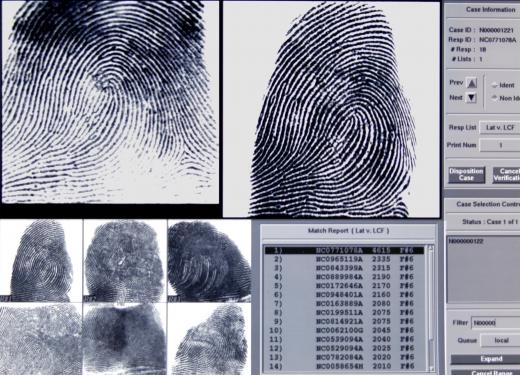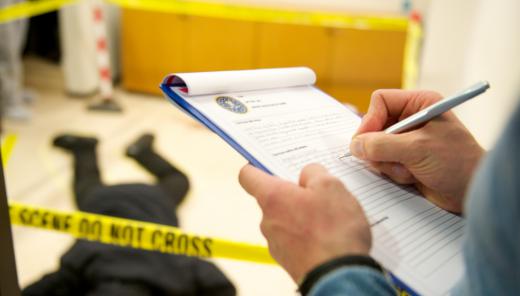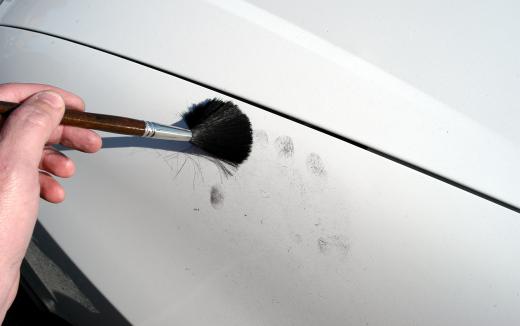What are the Different Fingerprint Techniques?
 Jessica Ellis
Jessica Ellis
Fingerprinting has been used as a means of identification since the days of ancient Chinese and Babylonian civilizations. Although not applied to criminal proceedings until the 19th century, the understanding of fingerprints emerged as a unique and distinct method of differentiating people far earlier in human history. Modern fingerprint techniques, aided by computer and laser technology, have sped the process of searching for matches, and provided an enormous database of comparative specimens.
Fingerprinting can be done both as a means of evidence gathering at a crime scene and as an identification method of potential suspects. Prints left at a scene can be a direct impression left on a malleable surface, such as if a suspect pushed down on clay or left a visual print in blood. Dirt or oil on the skin can also cause a faint fingerprint on some surfaces, which needs to be examined using powder or light to illuminate the print.

Traditionally, the main fingerprint techniques used to get identifying prints from a suspect involved an ink impression made on paper. Hands would be cleaned to wipe away dirt or other substances, and then dipped in ink. The suspect would roll each finger tip across a section in a piece of paper, and then press all five fingers down onto the paper. Although this fingerprint technique gave an effective impression of a person’s unique prints, it required manual examination to determine a match. As fingerprinting files grew by the thousand, identification became a laborious process easily subject to human error.

Today, common fingerprint techniques employ digital scanning equipment and computer databases of prints. The first electronic system was created by the Japanese police in the 1980s, but digital scanning and virtual database programs were quickly picked up by law enforcement agencies around the world. With most digital scanning systems, a suspect places each finger on a touch-sensitive electronic pad, which records the impression of the print. The print is then run through computer programs that quickly compare it to thousands, or even millions of recorded prints in search of a match.

One early issue was a lack of co-operation between different agencies in different areas. A suspect captured by the FBI in New York could have prints on file in a police station if Oregon, but since the databases were not shared, the link between crimes could be easily missed. Today, many countries and even international agencies share databases to that ensure matches are not missed.

The original fingerprint techniques used to discover a match are still employed by modern systems. Each person has distinct fingerprints, made up of patterns of arches, whorls, and ridges. Before computer databases, technicians compared the fingerprints of suspects to each print file, looking for identical matches in the unique patterns of a print. Computers still do the same job, but at a much faster speed with less room for error. In the centuries since fingerprint techniques were first used in criminology, both technology and method have grown together to create a fast and effective means of identification.
AS FEATURED ON:
AS FEATURED ON:














Discuss this Article
Post your comments